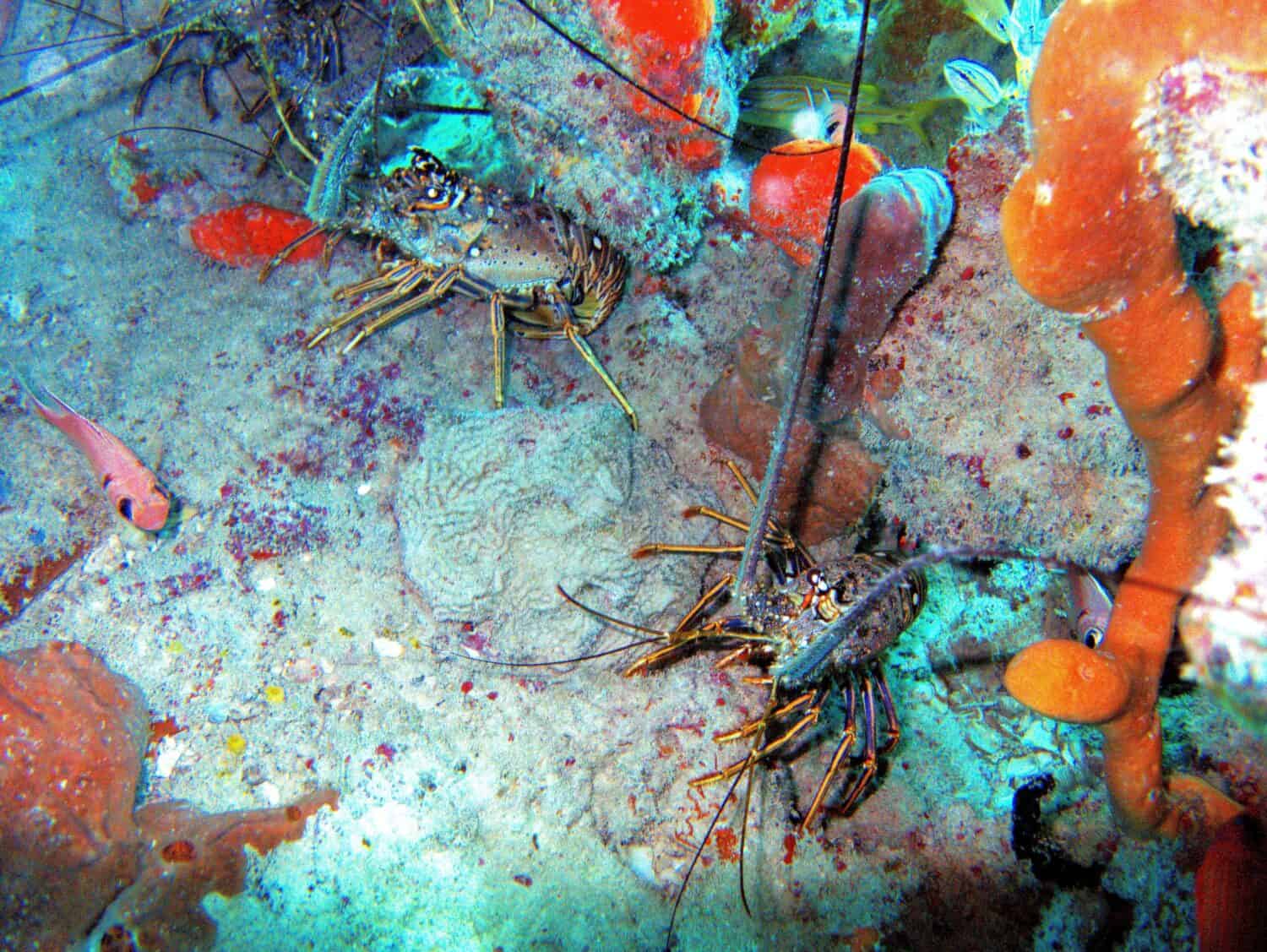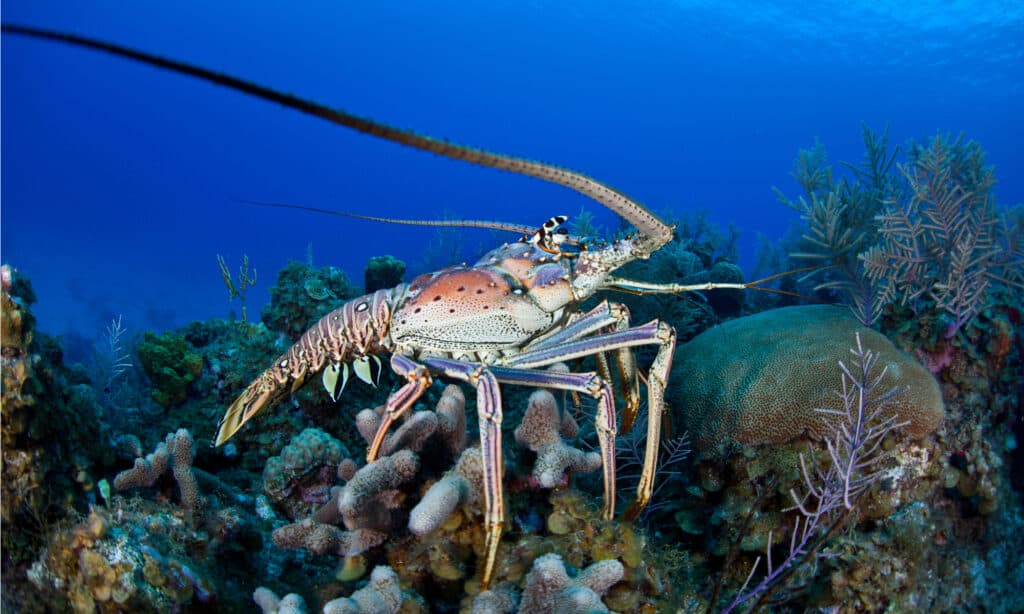The lobster season in Florida opens up during the last Wednesday and Thursday of July. This is when the two-day recreational season lets average Joes go out on the water to harvest lobsters before the commercial fishing nets are allowed out. The season ends before the lobster breeding season starts. But that doesn’t mean recreational harvesting is prohibited while commercial fishing nets are out. Everyone has an opportunity to catch lobsters during this time. However, you will need special equipment to ensure you harvest correctly and ethically. Therefore, below is a guide to everything you need to know about the lobster season in Florida.
Lobster Season in Florida
While lobster season in the U.S. typically runs from early spring to late fall. Florida’s lobster season is different. In the Sunshine State, it runs from August 6 through March 31. However, harvesting is forbidden during the last two weeks to protect the lobsters when they spawn. Therefore, the season provides plenty of opportunities for lobster enthusiasts to enjoy catching their favorite meal. But before you go out and enjoy yourself, check the rules and regulations to ensure you are harvesting correctly.

While lobster season in the U.S. typically runs from early spring to late fall, Florida’s lobster season is different. In the Sunshine State, it runs from August 6 through March 31.
Image: fsossi, Shutterstock
©fsossi/Shutterstock.com
Harvesting Rules and Regulations
When harvesting during Florida’s hunting season, there are several rules and regulations you need to abide by, including:
- Before claiming a lobster, ensure it is not too small. Measure it while still in the water; the hard part of the shell must measure more than three inches.
- Dive flags are mandatory when diving, and you must remove them when leaving. Furthermore, you must stay within 300 feet of your dive flag. However, you must remain within 100 feet of the dive flag in a channel.
- Monroe County (including the Keys) has a daily recreational limit of six lobsters. However, the rest of the state has a bag limit of 12 during the mini-season and six during the regular season, which are strictly enforced.
- You will be charged with a felony if you damage or take lobster from traps in federal or state waters. Additionally, recreational trapping is not allowed.
- Before heading out, check and stock all essential boat safety gear.
- If you see a boat displaying a dive flag, idle speed within 100 yards of the flag.
- Ensure not to damage coral in any way. Don’t bump, stand, or anchor your boat on it.

Before claiming a lobster, ensure it is not too small. Measure it while still in the water; the hard part of the shell must measure more than three inches.
©Ethan Daniels/Shutterstock.com
Licensing and Permit Requirements
When harvesting, you will require a lobster permit, and saltwater license, even from shore. Unfortunately, shore licenses are not valid for harvesting lobster. When obtaining these permits and licenses, you will incur the following fees:
- Lobster Permit – $5
- Annual saltwater license for residents – $17
- Annual saltwater license for non-residents – $47
- Annual lobster combo, which includes mandatory lobster permit and saltwater fishing license. Residents pay $27 and $57 for non-residents.
- Annual Lobster and snook combo, including permits for lobster and snook – $37 for residents and $67 for non-residents.
Safety Tips and Best Practices
It’s always best to be prepared; here are some tips to ensure you stay safe and enjoy a successful lobster season:
- To avoid bad weather conditions, always check the weather forecast before heading out to harvest.
- Follow the strict rules and regulations regarding lobster season in Florida. These are in place to control lobster populations and ensure sustainable fishing.
- Use the correct safety tools when setting and retrieving lobster traps. Equipment should include a knife, a life jacket, and gloves.
What Species of Lobster Can You Harvest in Florida?
Florida’s waters are home to two lobster species, the Caribbean spiny lobster and the American lobster. The latter is generally larger as adults weigh approximately 4 pounds. In addition, American lobsters are more valuable and can cost up to $8 per pound.
Caribbean spiny lobsters weigh around 2 pounds, so they are considerably smaller and don’t cost as much as American lobsters. Nonetheless, they are still mouthwateringly delicious and a delicacy for most people.
Equipment for Catching Lobsters in Florida
Everyone needs some basic equipment for lobstering. Luckily there are numerous dive and baits shops in the Keys or South Florida:
- Snorkeling set — includes a dry snorkel, Palau Short Fins, a mesh gear bag, and a silicone two-window mask with a skirt edge.
- Lobster dive kit — includes puncture-resistant gloves, aluminum Florida measuring gauge, mesh bag, and catch net. Furthermore, some stores sell the kit with an instructional DVD.
- Flippers — you will need these if you want to cover a large amount of territory. The best options are the long-bladed floating fins. They come in multiple color-coded sizes.
- Snorkel mask — Opt for a full-face snorkel mask as they are curved and anti-fogging, which makes visibility clearer. Additionally, you get models with camera mounts which is perfect for your GoPro.
- Dive Flag — This is something you never want to leave your house without when harvesting lobster. These flags can be towable buoys or floating flags that you tie to your ankle so they follow you around in the water. This is for your safety as it alerts fellow boaters that you are in the water and your location.
- Bully net — These nets are best when catching lobsters at night. They are most effective in shallow water while lobsters are feeding.
- Game bag — Once you catch your six or 12 lobsters, you will need something to put them in, which is why a game bag is necessary.
- Tickle stick — In order to harvest efficiently and responsibly, you will need a tackle stick. The best option is a non-corrosive aluminum stick with a curved end.
- Measuring tape — Carrying a measuring gauge while harvesting lobster is mandatory, and if you are found without one, your catch will be seized, and you will receive a fine.
- Gloves — If you don’t want to get poked while harvesting spiny lobsters, invest in a good pair of gloves. Try a pair of coated fishing gloves.
Delicious Lobster Recipes
Lobster tastes so good; it’s hard to believe there is a recipe that doesn’t suit it. But, there are some ingredients that bring out all the flavor of the lobster, including:
Butter-Poached Lobster Rolls with Spicy Sauce
When preparing these luxurious lobster rolls, you need to boil the lobster and then poach the meat in butter. For a well-balanced taste sensation, pour some spicy mustard mayo on the tops of the rolls.
Lobster Mac and Cheese
Surprisingly, lobster is amazing in mac and cheese. So, to get started, you need a generous amount of lobster meat. Furthermore, have to make a rich, three-cheese sauce with Gruyere, Fontina, and mascarpone, which you mix with the pasta, and top with parmesan cheese and panko crumbs before baking in the oven.
New England Lobster Dip
There is nothing better than sitting down to a game and munching on snacks dipped in delicious New England Lobster Dipv. However, it pairs best with crispy brioche slices or crunchy kettle-cooked chips.
Lobster Bisque
When cooking lobster, the claws, tail, shells, knuckles, and legs don’t have to go to waste. They are packed with flavor and, when simmered in water, make an explosive briny stock. If seasoned with sherry, mirepoix, and herbs, you can create a yummy bisque that you can severe hot or cold, with some fragrant jasmine rice to thicken it up.
The photo featured at the top of this post is © vins_m/ via Getty Images
Thank you for reading! Have some feedback for us? Contact the AZ Animals editorial team.







